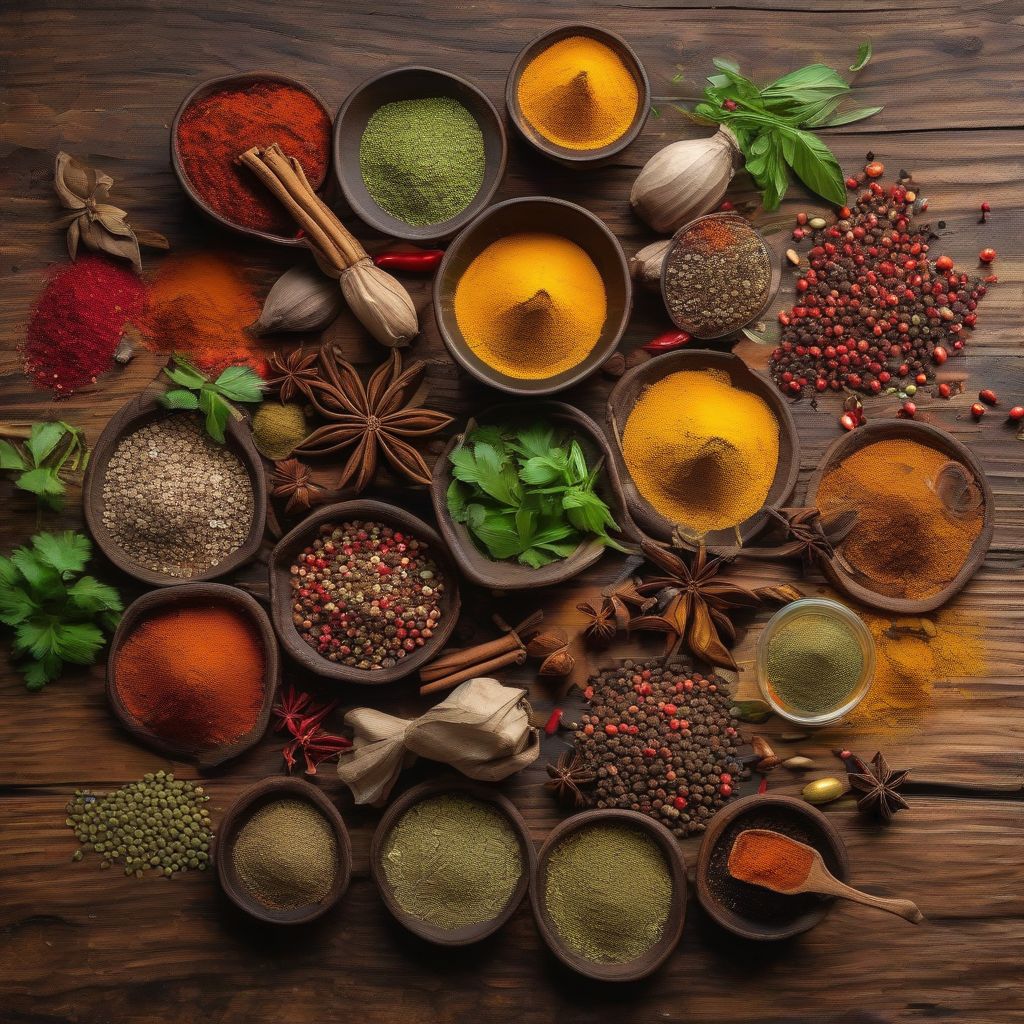Have you ever bitten into a taco, felt a slow burn from the chili, and then been hit by a wave of bright, citrusy flavors? That, my friends, is the magic of spices in Latin American cooking. It’s not just about heat; it’s about crafting a symphony of flavors that dance on your tongue. As a nutritionist and meal-prep coach, I’m passionate about helping people discover the joy of healthy eating, and Latin American cuisine, with its bold and diverse use of spices, offers a world of delicious possibilities.
A Fusion of Cultures: The Origin of Latin American Spices
Latin American cuisine is a melting pot of indigenous traditions and influences from Europe, Africa, and Asia. This unique blend is reflected in the vibrant tapestry of spices used.
Indigenous Roots
Long before European ships arrived, indigenous cultures across Latin America had established sophisticated culinary traditions using native plants and spices. Here are some key players:
- Achiote (Annatto): Used for its earthy, peppery flavor and vibrant red color, achiote is a cornerstone of dishes like cochinita pibil (slow-roasted pork) in Mexico.
- Chili Peppers: From the fiery habanero to the smoky chipotle, chili peppers are synonymous with Latin American cooking. Each variety offers a unique level of heat and flavor, adding depth and complexity to countless dishes.
- Cacao: Revered by the ancient Mayans and Aztecs, cacao beans were not just a source of chocolate but also a valuable spice. They were ground and combined with other spices to create savory sauces like mole.
Influences From Abroad
The arrival of European colonizers introduced new ingredients and flavors that further enriched Latin American kitchens.
- Cumin: Brought by the Spanish, cumin’s warm, earthy flavor became a staple in countless dishes, from hearty stews to vibrant salsas.
- Oregano: This aromatic herb, also introduced by the Spanish, found a natural home in Latin American cooking, adding a touch of Mediterranean warmth to sauces, marinades, and meat dishes.
- Cilantro (Coriander): A legacy of African and Asian influences, cilantro’s bright, citrusy notes are indispensable in salsas, guacamole, and as a fresh garnish that adds a final burst of flavor.
Beyond Heat: The Multifaceted Role of Spices
It’s easy to associate Latin American cooking with heat, but spices play a much broader role than just setting your mouth on fire (though that’s certainly part of the fun!).
Enhancing Flavor:
Spices are the artists of the culinary world, capable of transforming simple ingredients into masterpieces. In Latin American cuisine, they’re used to create layers of complexity and depth. Think of the warm, earthy aroma of cumin in a pot of Cuban black beans or the bright, citrusy lift cilantro gives to a fresh mango salsa.
Preserving Food:
In the days before refrigeration, spices played a crucial role in preserving food. Their antimicrobial properties helped prevent spoilage and extended the shelf life of perishable ingredients, especially in warm climates.
Adding Color:
Spices aren’t just about flavor and aroma; they also contribute to the visual appeal of food. Achiote, for example, is prized for its ability to impart a vibrant red color to dishes like cochinita pibil.
Health Benefits:
Many spices used in Latin American cooking offer health benefits beyond their culinary contributions. Turmeric, for example, contains curcumin, a powerful antioxidant with anti-inflammatory properties.
Essential Spices for Your Latin American Pantry:
Ready to bring the flavors of Latin America into your own kitchen? Here are a few essential spices to get you started:
- Cumin: Ground or in seed form, cumin is a must-have for everything from chili to black beans.
- Chili Powder: A blend of dried chilies, cumin, oregano, and other spices, chili powder adds a kick to countless dishes.
- Paprika: Smoked or sweet, paprika adds a touch of vibrant color and a subtly smoky flavor.
- Oregano: Use Mexican oregano for a more pungent flavor profile.
- Cilantro: Buy it fresh and add it at the end of cooking for the brightest flavor.
 Latin American Spices
Latin American Spices
[amazon bestseller=”Latin American Spices”]
A World of Flavor Awaits
Latin American cooking is an adventure for the senses. From the fiery kiss of a habanero chili to the warm embrace of cumin, spices are the heart and soul of this vibrant cuisine. So, embrace the bold flavors, experiment with new ingredients, and discover the joy of cooking with the spices of Latin America.
What are your favorite Latin American dishes, and what spices make them so special? Share your thoughts in the comments below!
